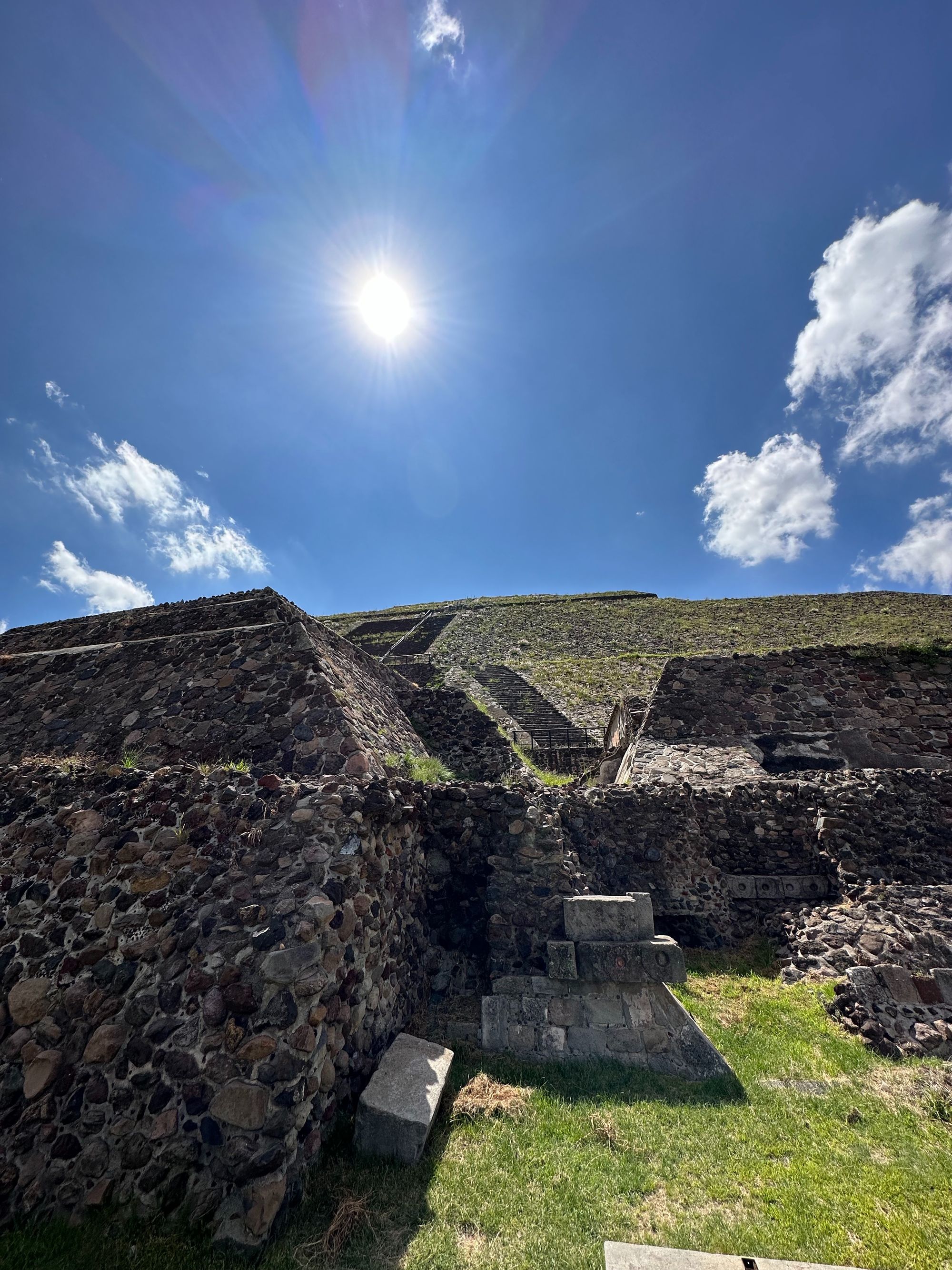Teotihuacan - Saturday
Okay, this is my last weekend in Mexico. I fly home Saturday (I'm a little excited to go). But I thought I needed to do some actual sightseeing. So, I booked a trip to Teotihuacan to see the big pyramids.
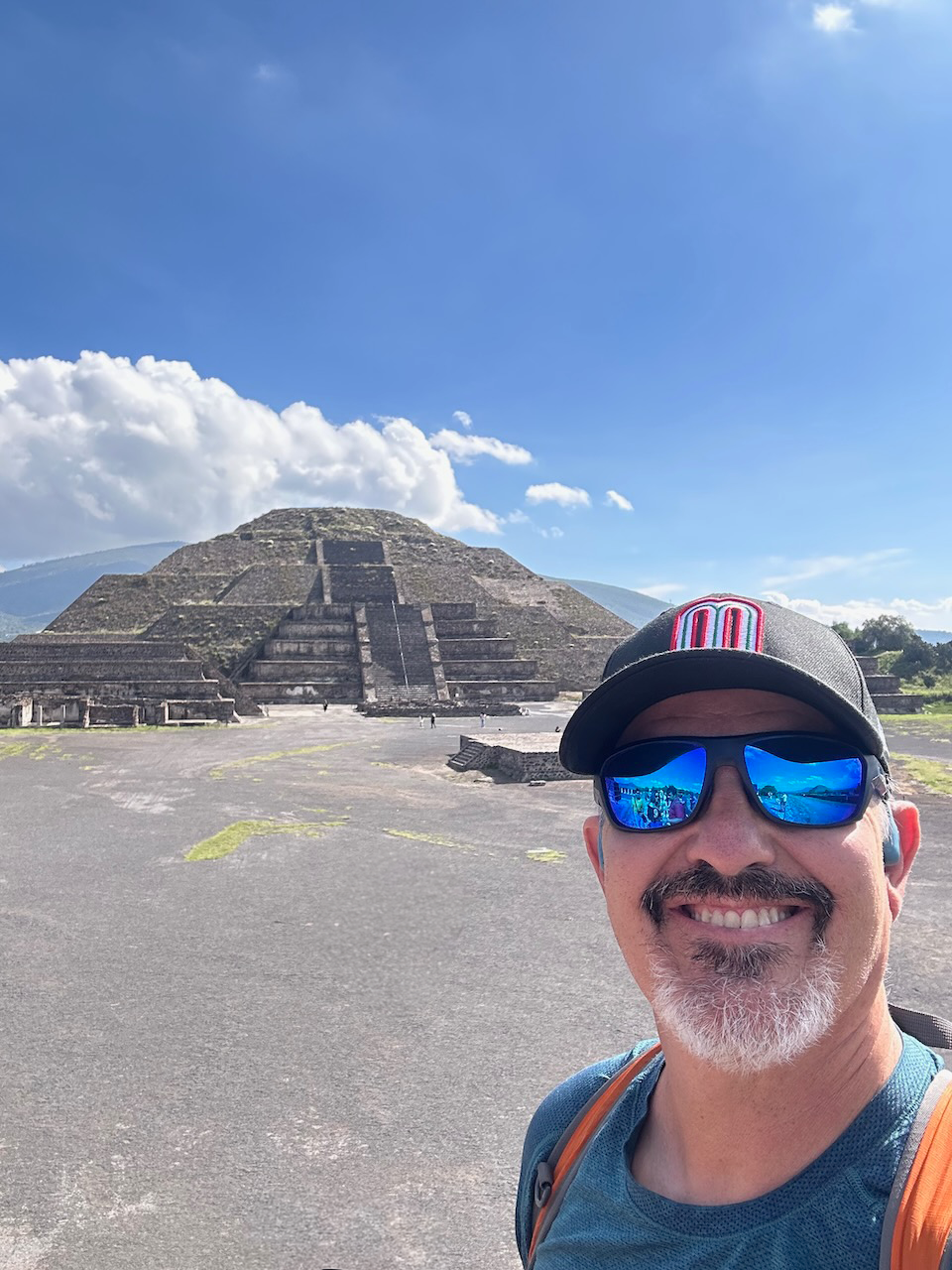
I took a bus ride from the Miga Cafe to the pyramids and then I joined the Spanish speaking group to wander around and listen to the guide. Sadly, I'm becoming more conversant in Spanish, but I still don't know for sure what the heck is going on. But, it was a good experience all the same. Get in there.
It is just hard to wrap you head around how massive these things are. The pyramid of the sun in particular looks like a mountain. From what I understood, by the time the Spanish arrived this place was already abandoned. Cortez and his army rode right by it without even knowing it was here, which would be easy to understand. I mean, who expects there to be a building the size of a mountain in the middle of nowhere and it was covered by plants?
Much of what we see today is restoration work, but like most of these ancient, super huge buildings, where there is original stonework the craftsman ship (fitting of stones to each other) is unbelievably close.
The original buildings would have been covered with brightly colored murals and frescos. After several thousands of years, they have deteriorated but you still get the idea of where they were going.
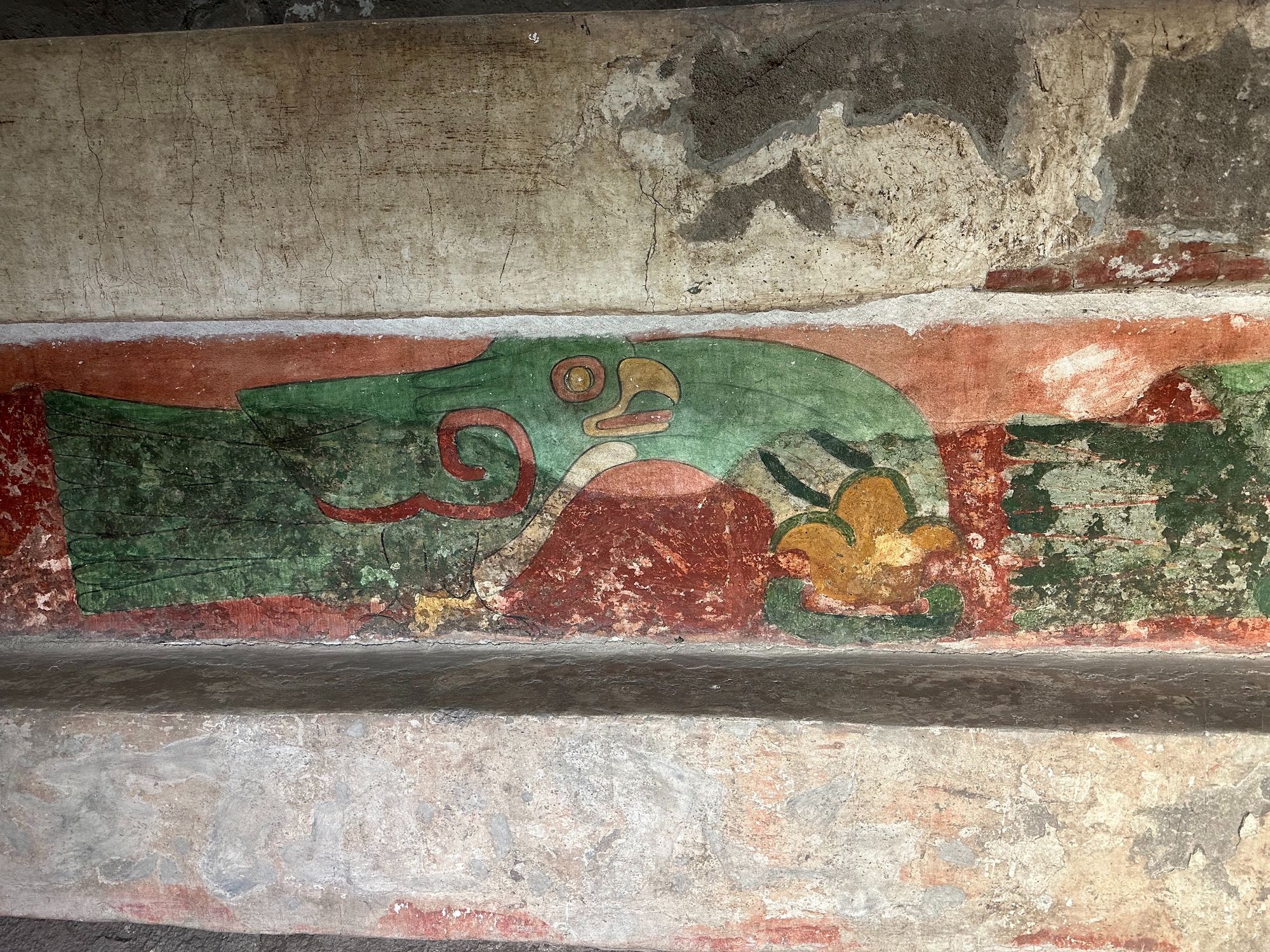
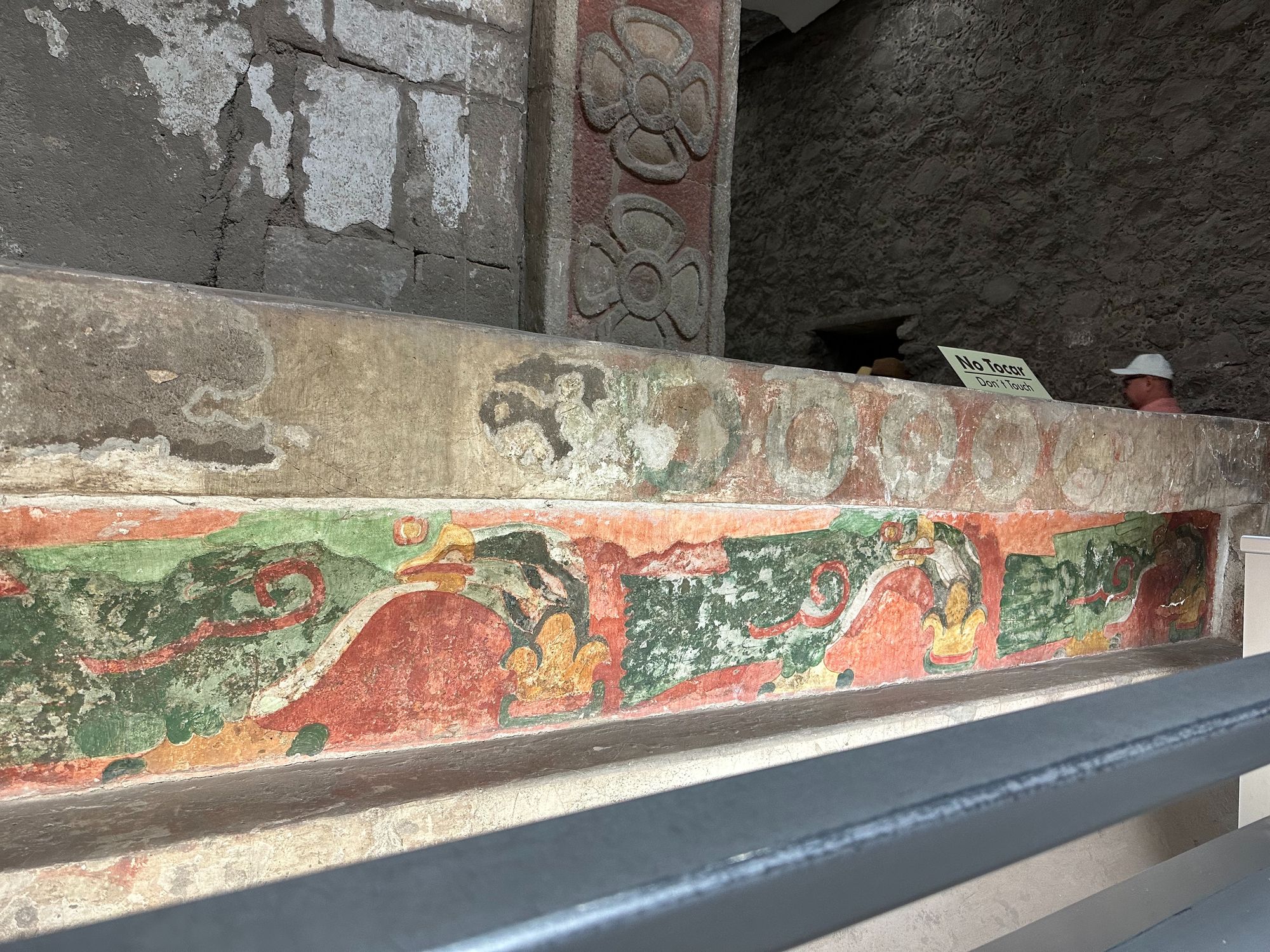
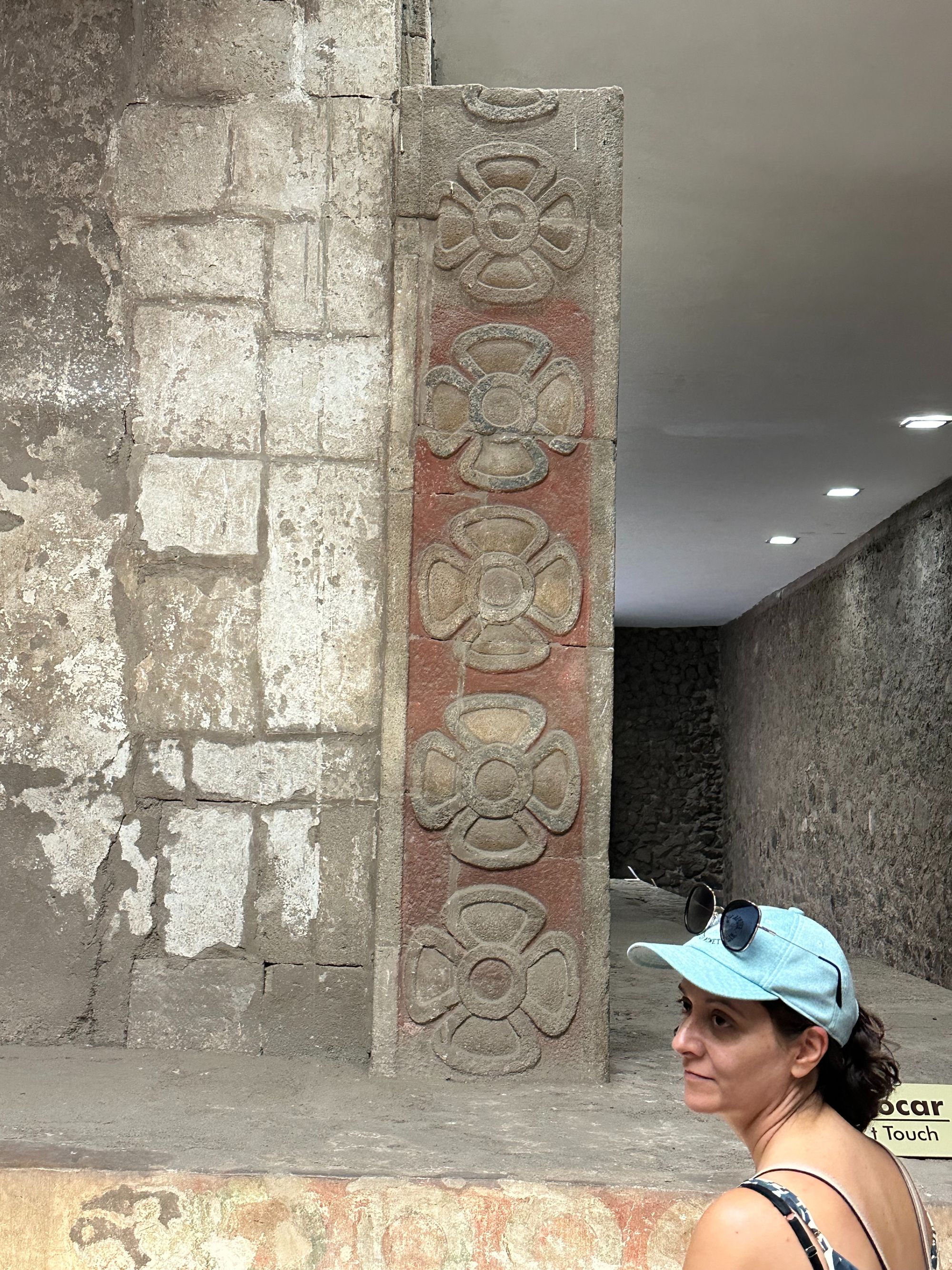
The ancients that lived here apparently have 5 cardinal points. And each had a connection to the body. There was one for north, south, east, and west, along with one that represented movement. From what I understood it represented energy movement from the earth through the spine to the sky. These ancient people appeared to hold to the Earth Mother, Sky Father, model of the universe. Life came from the earth and was feminine. Power came from the sky which was masculine. I did some googling, but I can't find the exact story with the ritual of breathing, that the guide used to talk about the directions. Bard wanted to connect it to the ancient Hindu idea of Chakras - and I guess that makes some sense. These people too believed in a connection of world and body that today we find "primitive." However, they did also practice human sacrifice so... not so sure this a model we want to follow. The post below has 5 roses for 5 directions, but now that I look at the picture, I see what appears to be a fragment of another rose, so maybe it was just a good story the guide told.
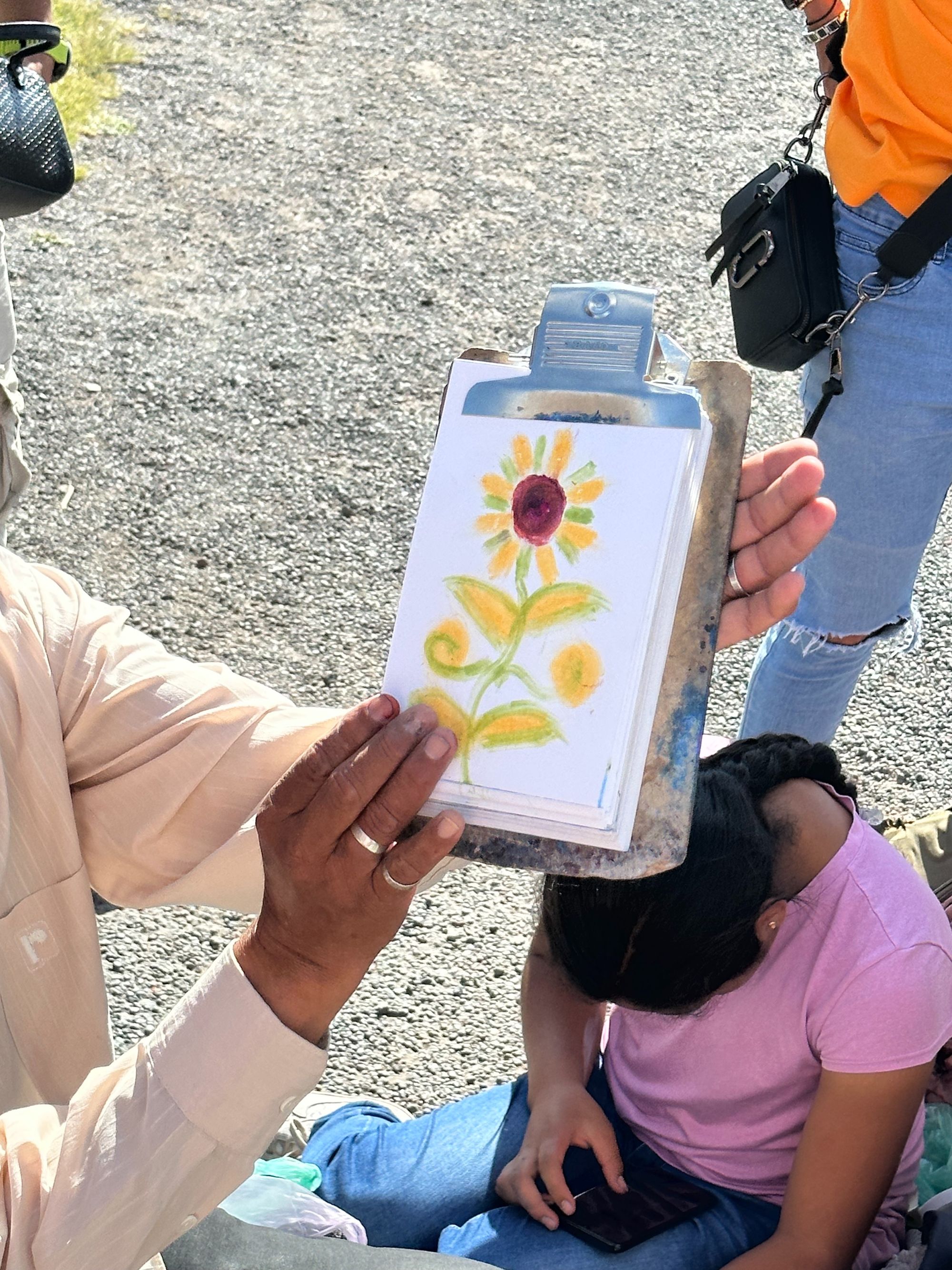
One of the most impressive things we saw was as demonstration by a local craftsman who used natural ingredients to make a picture - he used some material from a cactus flower to make a brilliant red, marigold petals for orange, some chalk that turned bright blue, tobacco leaves were brilliant green.
He was drawing with plants like they were chalk and crayons. It was a super impressive demo, and it was amazing how vibrant the colors were. We walked around the enormous complex listening to stories about the importance of numbers. The number 13 was super important in their rituals and many structures reflected this by having 13 levels (pyramid of the sun) or 13 steps.
We know the Mayan's used a double ancient calendar - one cycle had like 260 days (9 months, about the gestation of a human baby) and the other cycle matches the solar year. The number of weeks was sometimes also represented in the steps - either 40, or 50.
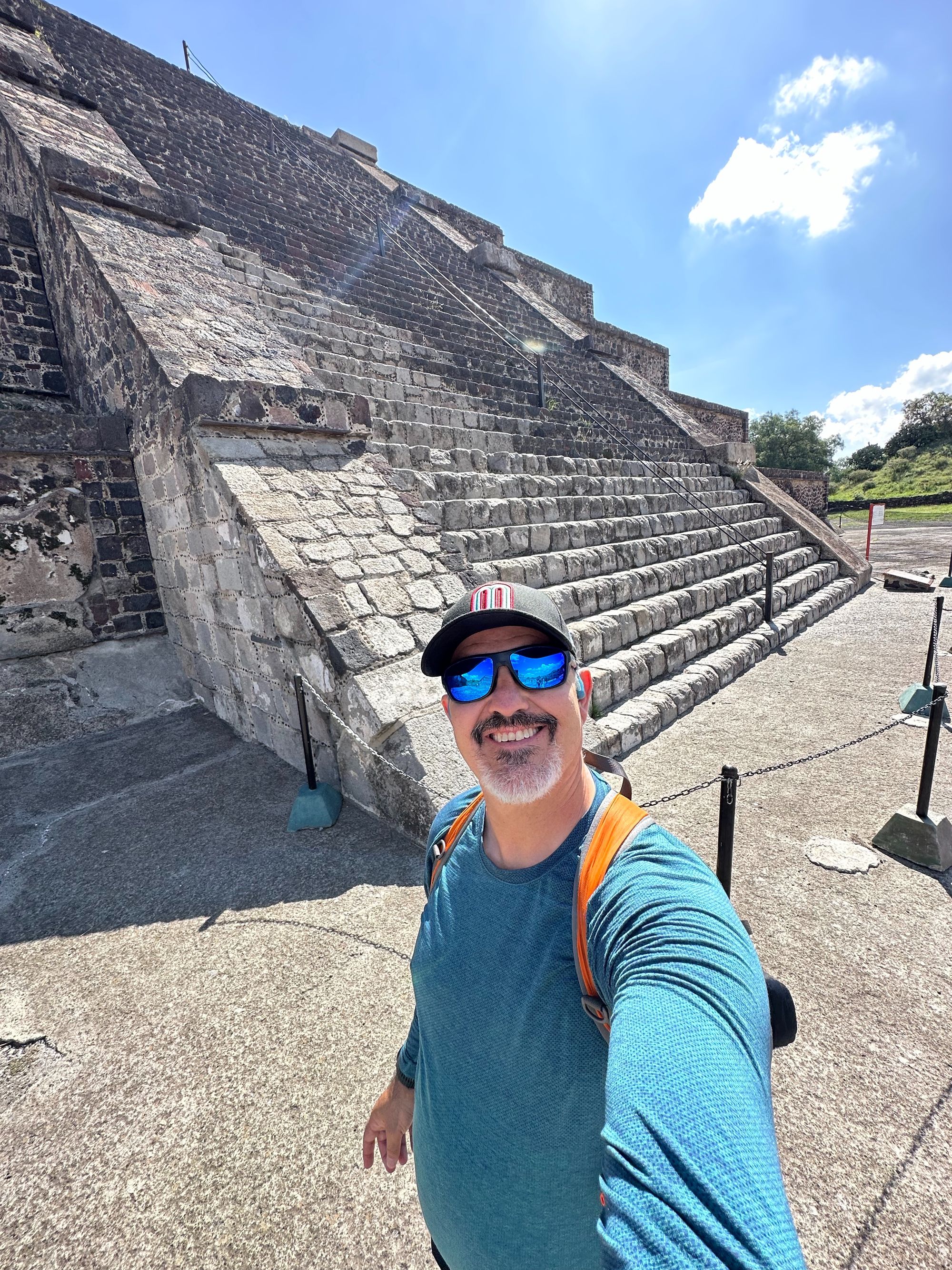
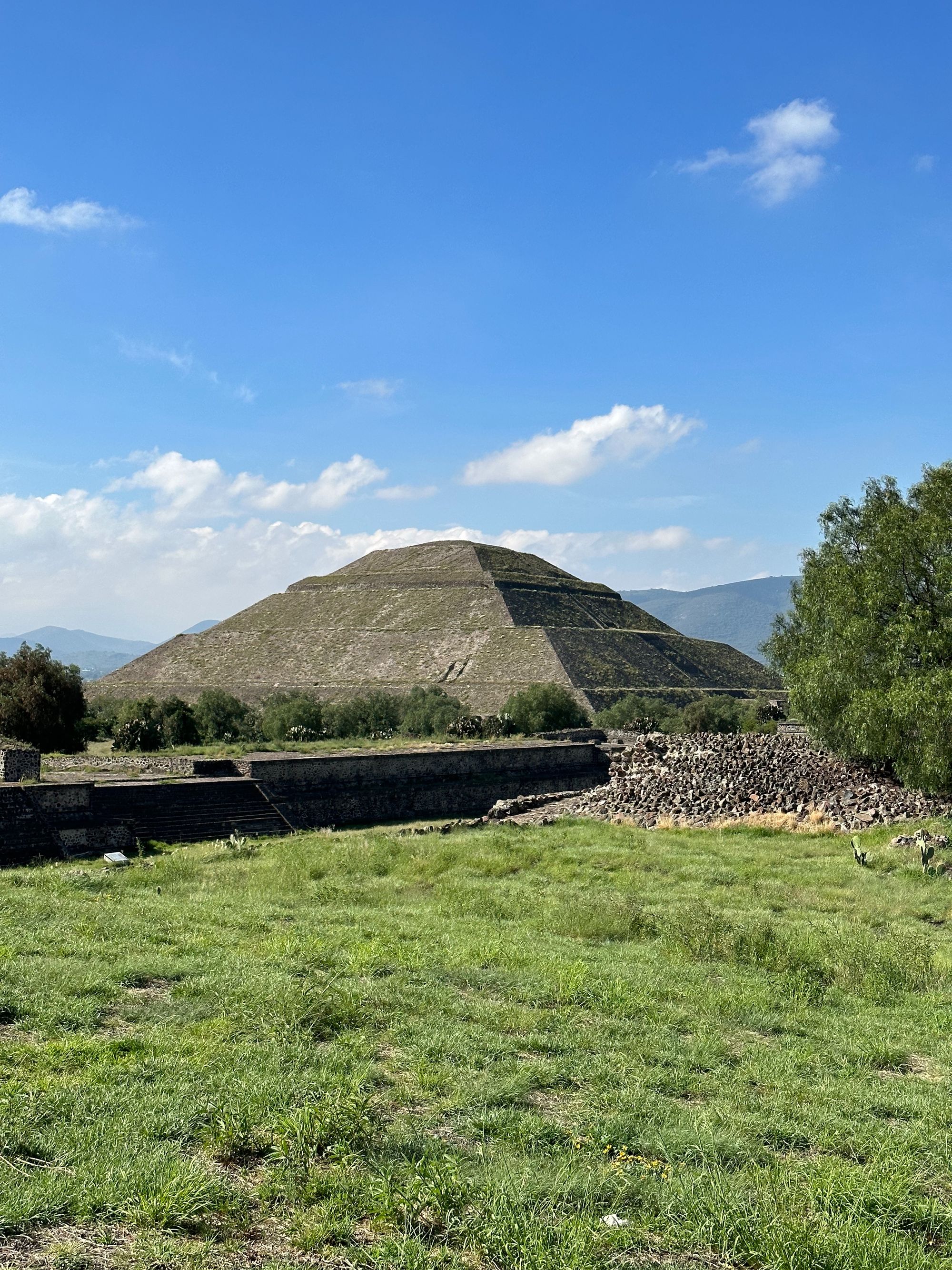
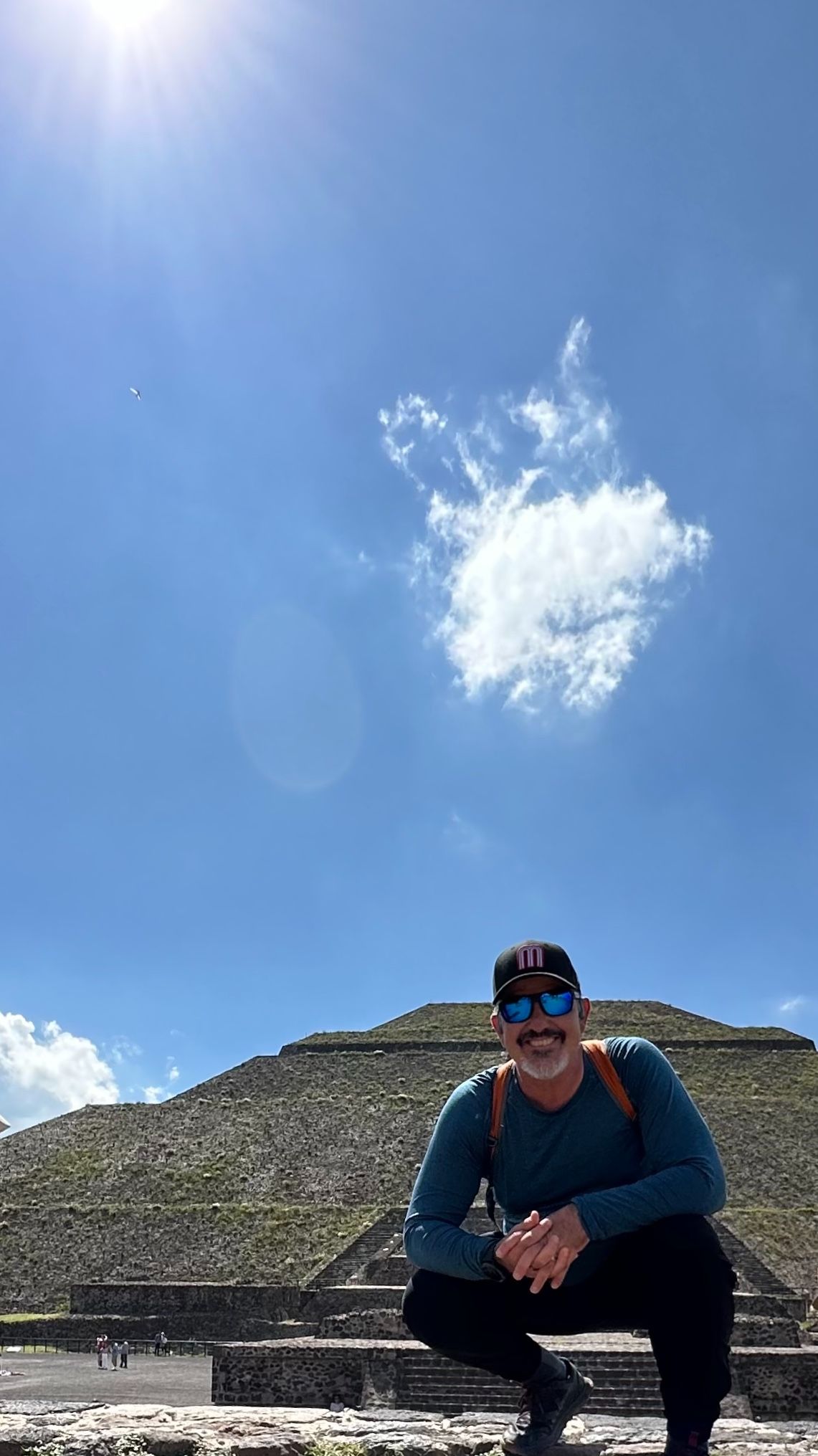
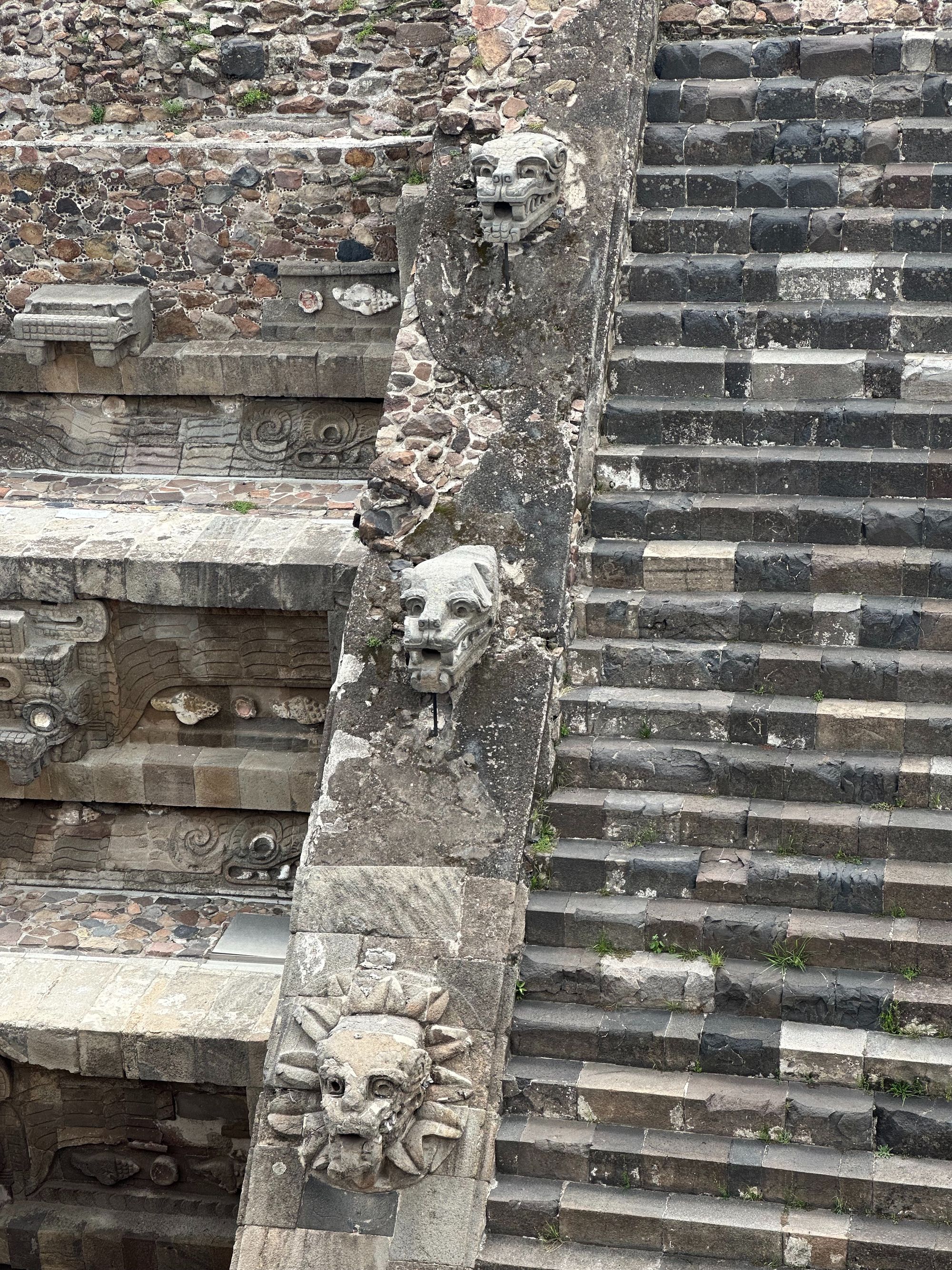
It is hard to grasp how massive the pyramid of the sun is. Also, the walkway between the pyramids is of equal scale. It is absolutely enormous. It is hard to believe a "primitive" people built this thing. And it was not the only pyramid. I think one of my favorite locations was actually the water temple where they built their own aqueducts so that water could some shooting out of the mouths of the serpents. They recently found a tunnel under the pyramid which they are excavating - it was 18 meters down and ran from the front of the pyramid under its base over 200 meters. And apparently it was full of thousands upon thousands of figurines and smaller temples or alcoves built inside. It reminded me of the discovery of tunnels beneath the Sphinx.
Apparently, each of the terrace layers was a level the water could reach. The stone steps are original. The archeologists use small black stones to indicate what was original and what was restoration. The finishing stonework on many of these temples was very impressive.
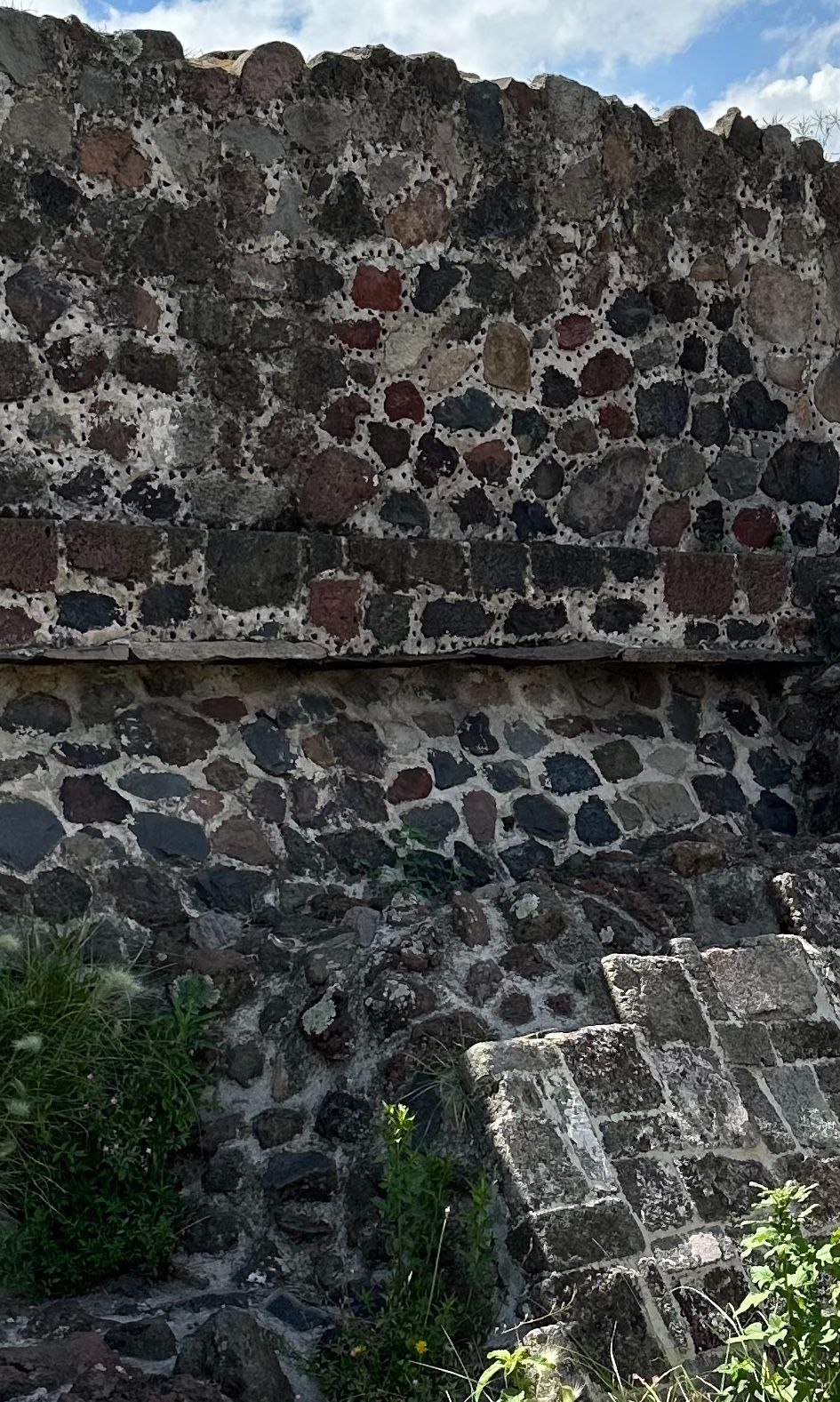
You can see three layers in the above picture. The finishing stones, then the layer beneath it (white mortar in between the stones) then the top layer, with the black rocks like pepper sprinkled in the grout - that top layer is restoration. The base stone work is not as impressive as the stairs at the water temple, or the original layers at the other pyramids, but it is still hard to believe they could build on this scale.
After the Pyramids
After the pyramids we went to a Tequila tasting and had lunch. It was an expensive gift store - but obsidian is much more expensive than onyx and much harder. Most of the tourist stuff for sale at the pyramids is onyx. Obsidian objects cost 10X as much. I'm sure what they were selling was genuine, but I couldn't bring myself to spend $75 for an Obsidian mirror I would basically use as a coffee coaster.
I had lunch with two people from Costa Rica, Nadie y Gabriella. I understand about ½ of what they were saying. Some day. I do communicate until I get tired, then my brain struggles to speak any language.
I'm glad I did the tour. And I am glad I did the Spanish language version. I needed the practice.
